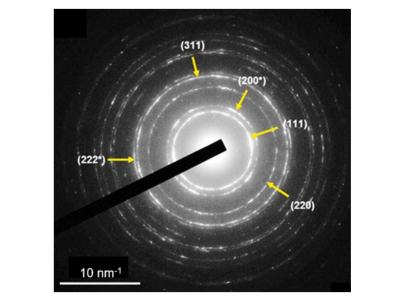
This study, a collaborative effort featuring an international team including I. Konyashin from Element Six Group, Germany, A. Cammarata from Czech Technical University in Prague, and Athanasios Koliogiorgos from our department, delivers a clear and definitive description of FCC-carbon's structural and electronic properties. For decades, the characteristics of FCC-carbon, sometimes considered a diamond variant, remained poorly defined. This unique material has a large bandgap (6 eV) typical of insulators yet exhibits notable semiconductor-like conductance (0.1 S/m). Our findings introduce FCC-carbon as a novel class of quasivalent solids with unusual conductivity not previously documented.
In this combined experimental and computational study, crystalline films of FCC-carbon were synthesized via plasma-assisted chemical vapor deposition (PAPVD). Its crystal and electronic structure was unambiguously established by various experimental and ab-initio computational methods. The results show that FCC-carbon is characterized by an uncommon type of conductivity that has not been reported in the literature so far. Therefore, the material is proposed to be classified into a separate class of quasivalent solids. The nature of chemical bonds in this carbon allotrope stipulates negative electron affinity and allows for its high polarizability and very low thermal conductivity.
The properties of FCC-carbon open a novel pathway to “carbon electronics,” encompassing high-end fields such as high power/high-frequency electronics, transparent electronics, electron multipliers, field emitters, quantum memory, and others. This marks FCC-carbon as the first intrinsic semiconductor with an ultra-wide bandgap, opening exciting new avenues in technology and material science.
For detailed insights, refer to the article published in Communications Materials.




